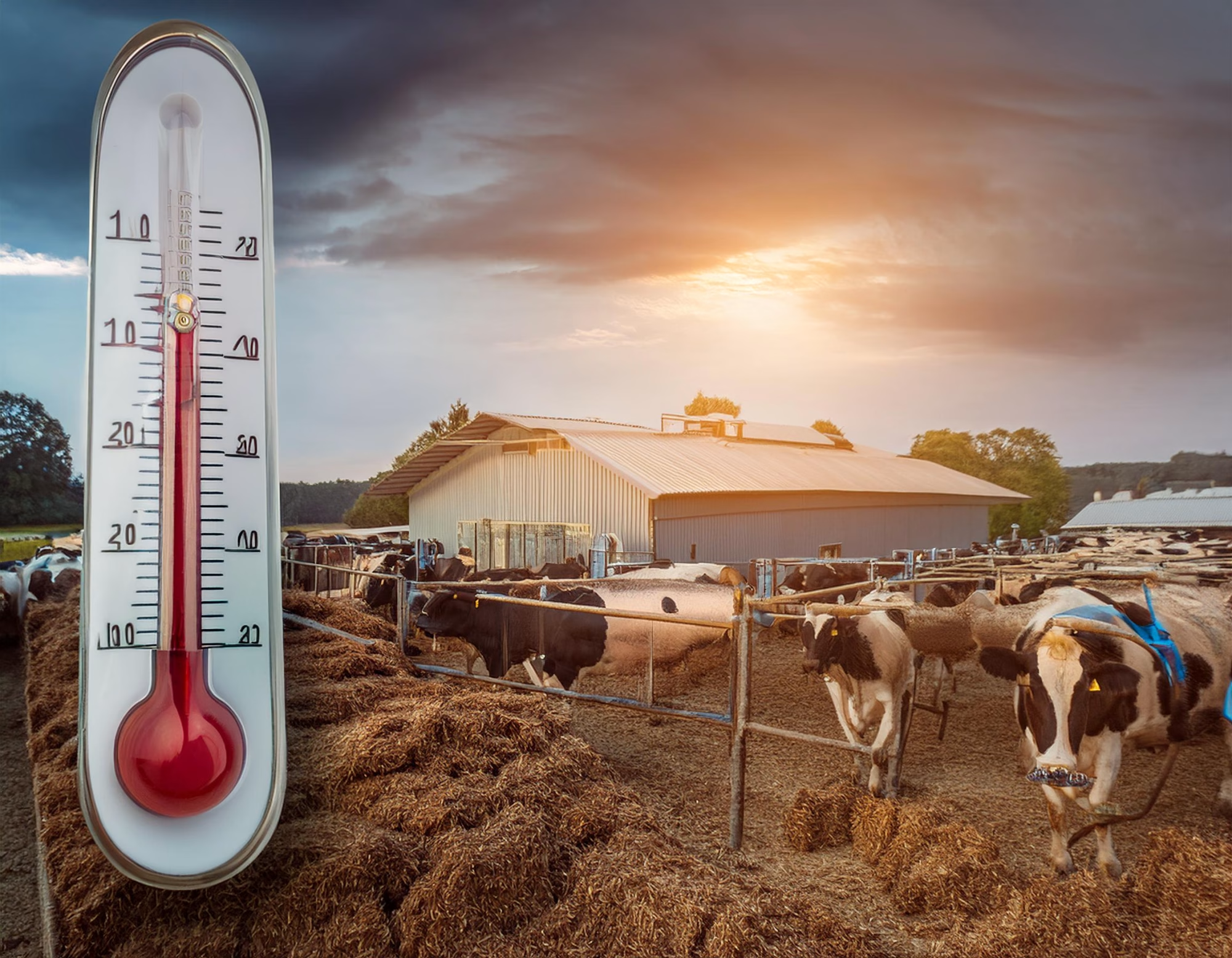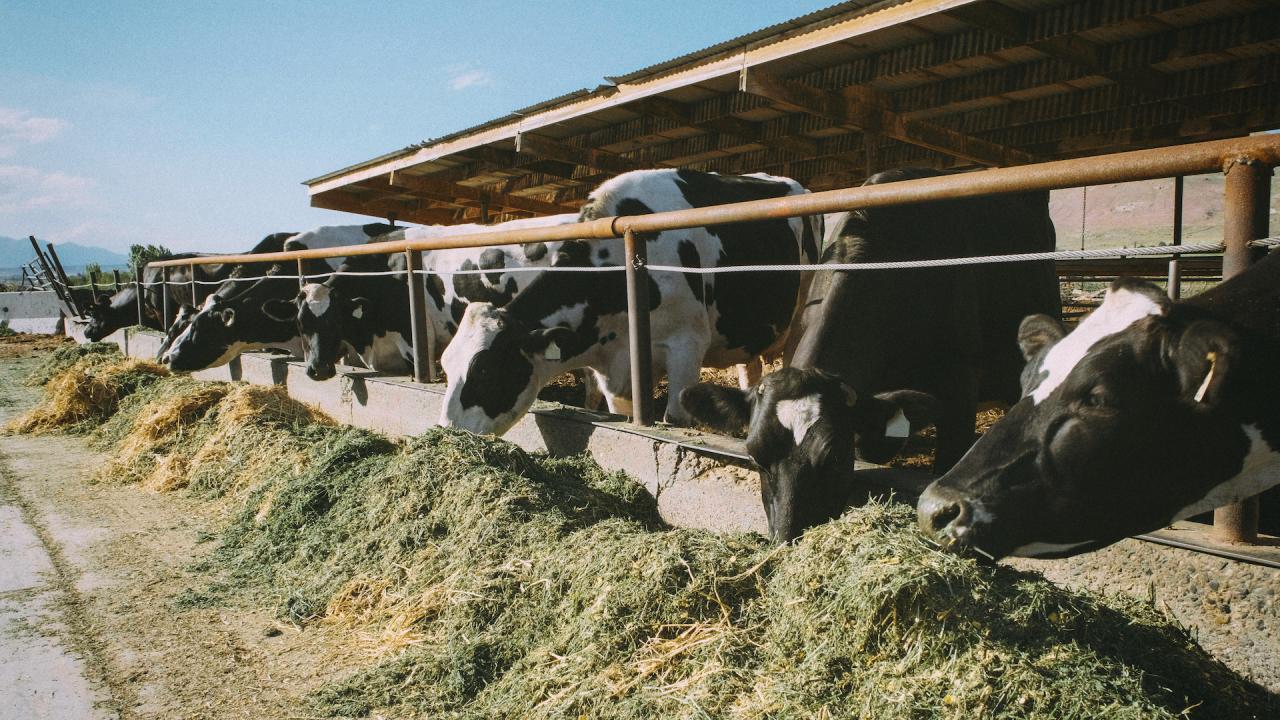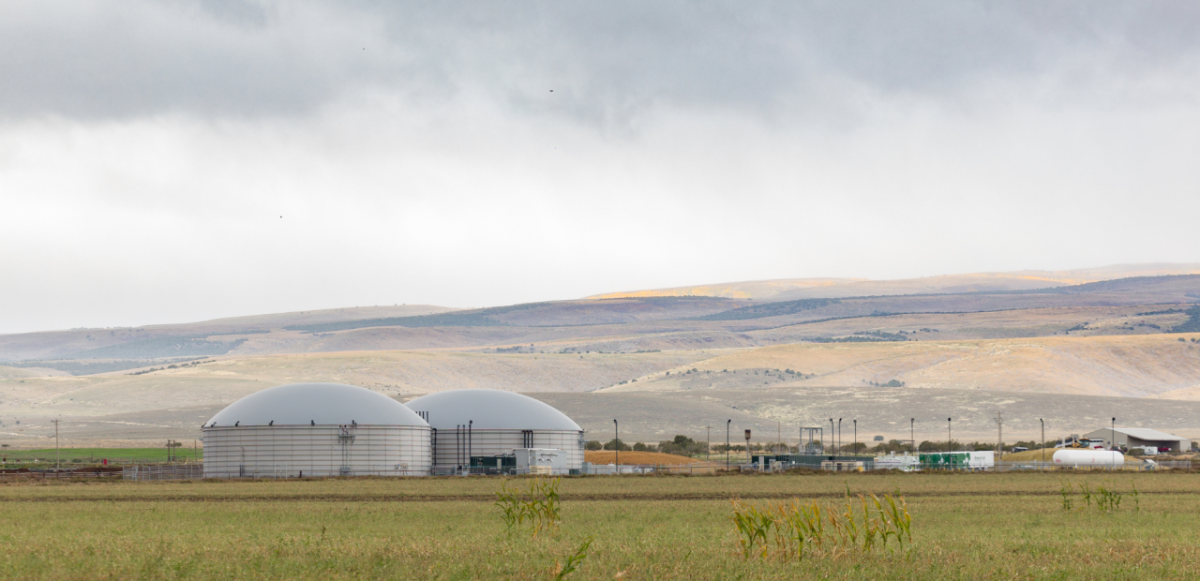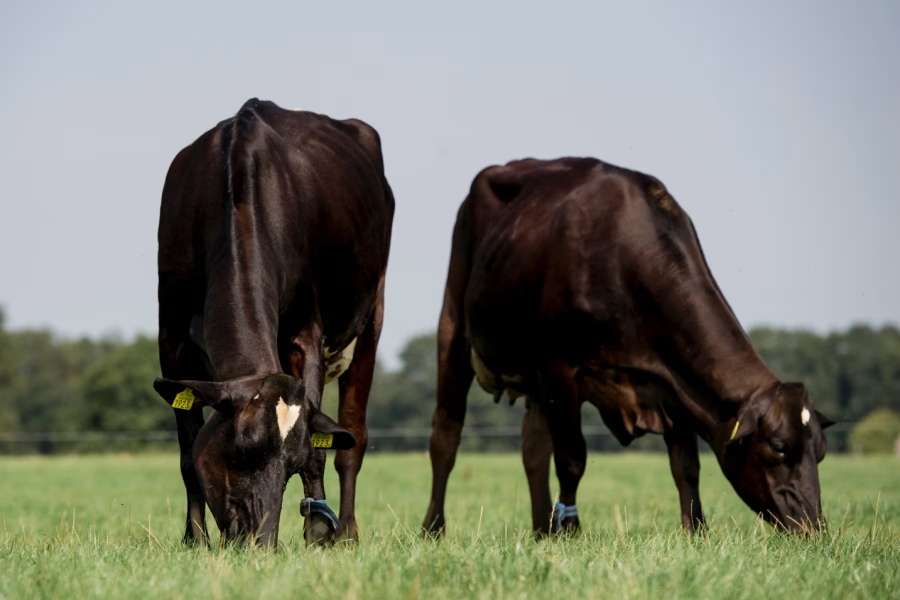How are global dairy farmers facing climate and competition hurdles? Are innovative strategies enough to ensure a sustainable future?

Can the world’s dairy farmers sustain their businesses in a rapidly changing climate while meeting the demands of a burgeoning global population? This question was central to the International Dairy Federation (IDF) World Dairy Summit in Paris, where leading industry experts tackled the looming challenges and untapped opportunities in global dairy farming as discussions at the summit underscored the critical need for innovative solutions and international collaboration, a key speaker emphasized that the transformation of dairy farming is not just an industry concern but a global priority. Amid rising temperatures and evolving markets, the summit provided a platform for sharing insights on how different regions can adapt and harness these changes to drive growth and sustainability.
Milking Opportunities: The Dairy Industry’s Pathway to Feeding 10 Billion
The world’s population is increasing, predicted to reach 10 billion by 2050. This swift growth presents a formidable challenge: ensuring that everyone, everywhere, has access to sufficient, safe, and nutritious food. In this quest for food security, dairy farming plays a pivotal role, providing critical sources of nutrition essential to diets around the globe.
Dairy products are not just about milk and cheese; they are a vital source of essential nutrients, including calcium, vitamins, and proteins. As such, dairy farming becomes indispensable in meeting the dietary needs of billions, especially as people aspire to healthier eating habits. But here’s the catch: how do we increase production sustainably without compromising our environment?
The answer lies in embracing innovation.
Globally, the dairy industry is at a crossroads, compelled to find more innovative solutions that align with our escalating demands. Innovation in breeding, feeding, and milking practices are already transforming traditional approaches. Technologies that optimize supply chain efficiency and enhance product quality could be our necessary game-changers. Think genetic advancements, feed efficiency, and technologies that reduce greenhouse gas emissions.
Are we, as an industry, ready to rise to the occasion? Navigating this complex terrain will require collaboration, creative thinking, and a willingness to adapt. Solutions may involve policy shifts, research investments, or new partnerships. But whatever form they take, these innovations are not just necessary—they are essential. As we chart this course, let’s embrace the imperative for change and pioneer a future where dairy nourishes and sustains our planet.
South America’s Dairy Revolution: From Small Farms to Production Giants
Marcelo Carvalho, a critical voice at the International Dairy Federation World Dairy Summit, offered a fascinating glimpse into the transformation of milk production in South America. From his insights, the region is clearly amid a significant shift. Brazil is a cornerstone, contributing more than half of the continent’s milk supply. The numbers don’t lie—a decade ago, small-scale farms dominated the landscape, with 60% producing just 27% of the region’s output. Fast forward to today, and this has changed dramatically. Now, a select few farms churning out more than 10,000 liters daily are responsible for a third of total production.
But these gains aren’t without their hurdles. Climate variability hits South American dairy farmers hard, with phenomena like La Niña and El Niño wreaking havoc on production stability. In addition to the severe floods in Brazil this year, it’s a wonder these farmers manage to keep the milk flowing.
The trend towards more significant, more consolidated farming operations is unmistakable. Yet, by global standards, most farms are still relatively small, with an average daily output of just 437 liters. As these more prominent players gain ground, what will happen to the myriad of smaller farms? It seems only time will tell. But one thing’s sure: carving a path to opportunity amid these challenges requires resilience and innovation.
North America’s Dairy Dilemma: Growth Amidst Climate Challenges
Dr. Andrew Novakovic from Cornell University spotlights North America’s remarkable 1.02% per capita production growth, which positions the continent favorably against global growth trends. This uptick in production places North America second only to Asia and starkly ahead of other regions like Africa and Oceania.
Despite the promise this growth holds, it’s challenging. Climate change looms over the continent, threatening to alter traditional farming regions drastically. In Canada, warmer temperatures are expected to shift beneficial agricultural conditions further north and west. Meanwhile, the U.S. will see similar transformations, with the southeastern U.S.’s hotter climes moving northward, while California’s famed Central Valley weather patterns may migrate toward the Pacific Northwest.
Yet, with these challenges come opportunities. North America’s natural advantage in ample rainfall could act as a buffer. The Eastern U.S. and Canada, known for their generous precipitation, may find solace in this consistency. This advantage isn’t merely about dodging dry spells but also ensuring sustainable farming amidst regional climate shifts.
Antipodean Dairies: Unraveling the Complexities of a Changing Climate
Joanne Bills illuminates the parallels and distinctions between Australia’s and New Zealand’s dairy landscapes. Both nations have remarkably stabilized milk production, pivoting towards higher-value dairy products to bolster their market positions. Yet, the scenarios aren’t different.
While similar strategies are employed, such as increased cheese production, Australia caters to domestic demands. In contrast, New Zealand has sharpened its focus on exports. Such strategic differences underscore the unique market dynamics each country navigates.
Climate impacts, however, cast a shadow over both dairy industries. Australia grapples with limited government pressure to drive changes despite facing severe climate repercussions. On the other hand, New Zealand’s farmers, equipped with the infrastructure and skills, are increasingly responsive to commercial drivers pushing for greenhouse gas reductions. Yet, they face the potential pitfalls of policy overreactions amid significant community pressures.
Water policy is a critical concern on both sides of the Tasman Sea. New Zealand imposes winter grazing restrictions, directly impacting milk production capabilities. Meanwhile, Australia contends with water scarcity, which results in dwindling water availability for dairying, particularly in irrigation-dependent regions.
Europe’s Dairy Predicament: Survival of the Fittest Amid Rising Pressures
Milica Kocic delivers a stark overview of the current state in Europe, where sustainability constraints and intense competition for land are reshaping the dairy landscape. Farmers’ profitability in 2022 felt like a long-awaited respite after years of struggle. Yet, rising costs and diminishing land availability overshadow these gains, forcing many smaller farms to confront an uncertain future.
Smaller farms, particularly those with fewer than 100 dairy cows, are precarious. Kocic notes that these operations are particularly vulnerable to shifting economic and regulatory tides. With increasing land prices and newer, more efficient farming practices gaining popularity, smaller farms need help to stay afloat amid escalating expenses. Robust, cost-effective policy solutions are critical to their survival.
However, the path forward could be more straightforward. Kocic warns that without proactive policy interventions focused on reducing overheads and optimizing resources, many of these farms might be forced out of business entirely. Comprehensive yet affordable policy measures could provide a crucial lifeline, ensuring that farms of all sizes can navigate this challenging competitive landscape.
Africa’s Dairy Conundrum: Navigating a Complex Web of Challenges and Opportunities
As the sun rises over Africa’s vast landscapes, the challenges faced by the dairy industry become increasingly apparent, echoing Bio Goura Soule’s observations. Low productivity remains a fundamental hurdle. In regions dominated by pastoral practices, the output per dairy cow is notoriously low, stifling the potential to meet burgeoning demand.
The cost factor looms, casting a shadow over the industry’s growth. Rapidly escalating animal feed and healthcare expenses increase producers’ financial stress, constraining their ability to expand and innovate. Soule emphasizes collection difficulties, another thorn in the side of progress. The diverse and fragmented supply chain and inadequate infrastructure present logistical nightmares, hindering efforts to streamline milk collection.
Imports, chiefly powdered milk, further complicate this intricate tapestry. While these imports initially satisfy immediate consumer needs, they inadvertently stall investments in the nascent stages of the value chain, causing long-term stagnation in local production capabilities. The precarious balance between meeting consumer demand and fostering local growth remains a quintessential conundrum for Africa’s dairy sector.
Asia’s Dairy Dynamics: China’s Bold Revitalization and Southeast Asia’s Struggles
Li YiFan has shared noteworthy insights on China’s ambitious dairy industry revitalization plan, outlining strategic goals for 2025. This includes a significant boost in raw milk production, targeting 41 million metric tons, and a concerted effort to reduce feed costs, pivotal to maintaining competitive pricing. Notably, there is a strong focus on large-scale farming, with over 75% of farms housing more than 100 cows, thus promoting higher efficiency and productivity. The initiative also aims to enhance cattle breeding capacities and encourage dairy enterprises to establish farms, fostering direct integration of dairy farming and processing.
As for Southeast Asia, the region contends with unique challenges that starkly contrast with China’s advancements. The intense heat stress prevalent in Southeast Asia poses a substantial constraint to dairy farming, affecting the well-being and productivity of dairy cows. Such climatic conditions make it difficult for local producers to compete, further complicated by fierce market competition. Imported dairy products, often cheaper and perceived as superior quality, dominate the market, making it an uphill battle for regional producers to secure their foothold. Consumer preference for these imports exacerbates the struggle, hindering the growth potential of local dairy operations.
India’s Dairy Narrative: Empowered Women and Economic Hurdles
Sudha Narayana vividly describes India’s dairy landscape. Women are the primary caregivers in animal rearing, accounting for 60% of the labor force invested in this sector. Their role isn’t just supportive; it’s pivotal, as they contribute significantly to the dairy industry’s operations and decision-making processes.
However, these contributions strain as rising milk prices challenge the sector. The economic barriers beset many Indian households and prevent more than half of the population from affording a healthy diet—a cultural aspiration deeply rooted in the community’s desire for wellness. This financial hurdle isn’t just about numbers; it’s about accessing nutrition and maintaining health within economic confines. This scenario underscores the need for more inclusive strategies that bridge the gap between aspiration and reality, ensuring that the labor force, led prominently by women, can thrive in a more supportive economic environment.
The Bottom Line
The global dairy industry is at a critical juncture, with each region facing unique challenges and opportunities. From the fluctuating farm sizes and production rates in South America to the climate shifts impacting North America, the path forward requires innovation and resilience. Meanwhile, in Europe, survival hinges on adapting to tight economic and policy pressures. At the same time, Africa struggles with infrastructure and productivity issues. In Asia, particularly in China and India, the focus is on self-sufficiency and leveraging cultural shifts. Australia’s and New Zealand’s climatic adversities demand responsive strategies. What binds these diverse challenges is the undeniable need for collaboration across borders. Whether through sharing sustainable practices, developing technology, or forming supportive policies, the answer lies in working together to secure a prosperous future. Let’s ignite this conversation—how can you contribute to the change? Share your thoughts and insights in the comments below, or spread awareness by sharing this article. Together, we can shape the future of dairy farming.
Summary:
The global dairy industry is on the edge of transformation, addressing climatic shifts and fierce competition amid a booming global population. Insights from the International Dairy Federation World Dairy Summit emphasize the urgent need for sustainable practices. Industry experts discuss how regions like South America and Asia manage challenges specific to their climates while strategies unfold in North America, Europe, and beyond. The question remains: can the dairy sector innovate swiftly to guarantee food security for 10 billion people by 2050? Embracing innovations, from genetic advancements to feed efficiency and reducing emissions, is crucial. Climate variability affects South American farmers, while North America’s per capita production growth is notable. International collaboration is vital for a sustainable future.
Key Takeaways:
- The global dairy industry is navigating complex challenges, including climate variability, market competition, policy changes, and economic constraints.
- Collaborative efforts among global regions are essential for a sustainable future in dairy production.
- South America has significant trends towards larger consolidated dairy farms amidst climate variability challenges.
- North America’s ample rainfall provides potential benefits despite shifting climate conditions favoring certain regions.
- Australia and New Zealand emphasize higher-value dairy products and strong trade linkages, though they face severe climate impacts and water policy issues.
- European dairies face a shrinking raw milk pool and must adapt to sustainability constraints and policy uncertainties.
- Africa faces low productivity and high costs in dairy production but has potential for growth through targeted initiatives.
- China’s dairy sector aims for self-sufficiency with government-backed large-scale farms, while Southeast Asia struggles with market fragmentation.
- economic barriers impact India’s dairy production, though it shows potential growth through increased crossbred cattle and commercialization of dairying.
Learn more:
- Addressing Dairy Farmers’ Concerns on the Impact of Climate Change
- Why 80% of U.S. Dairy Farms Are Struggling: An Insider’s Look at the Unseen Challenges
- Global Dairy Trade: Key Insights Every Dairy Farmer Should Know
 Join the Revolution!
Join the Revolution!
Bullvine Daily is your essential e-zine for staying ahead in the dairy industry. With over 30,000 subscribers, we bring you the week’s top news, helping you manage tasks efficiently. Stay informed about milk production, tech adoption, and more, so you can concentrate on your dairy operations.







 Join the Revolution!
Join the Revolution!








